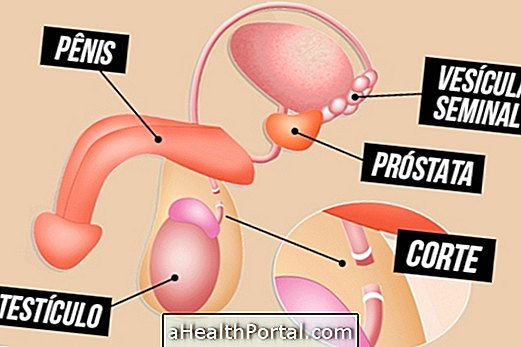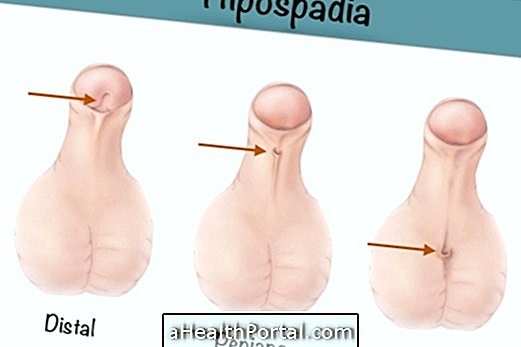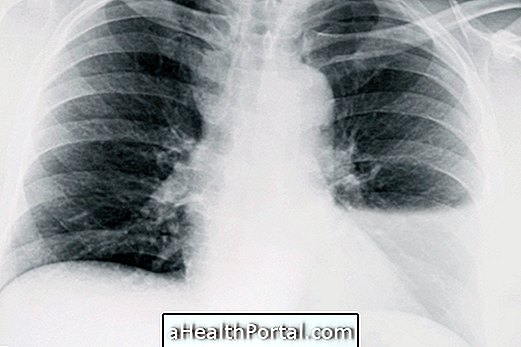Placenta previa, also known as low placenta, occurs when the placenta is partially or totally inserted in the lower region of the uterus, and may cover the internal opening of the cervix.
It is usually detected in the second trimester of pregnancy, but this is not a serious problem because as the uterus grows, it moves to the top allowing the opening of the cervix to be free for delivery. However, in some cases, it may persist, being confirmed by ultrasound in the third trimester, around 32 weeks.
According to its location in the uterus, the placenta previa can be classified into different types:


- Total placenta previa: the placenta completely covers the inner opening of the cervix;
- Partial pre- placenta : the placenta partially covers the internal opening of the cervix:
- Placenta previa marginal or lateral: the placenta reaches internal opening of the cervix, but not the copper;
- Placenta previa : The placenta is located in the lower part of the uterus but does not reach the inner opening of the cervix.
Although not always causing symptoms, the placenta previa can cause vaginal bleeding, risk of preterm delivery, or complications during labor. This problem is more common in women who are pregnant with twins, multiparous, who have previous uterine scars, who are over 35 years old, or who have had previous placenta previa. Understand what the placenta is for and what problems it can develop in pregnancy.
The treatment is indicated by the obstetrician, and in case of placenta previa with little bleeding, it is enough to rest and avoid sexual intercourse. However, when the placenta presents severe bleeding, it may be necessary to be hospitalized for fetal and maternal evaluation.
How to identify
Symptoms of placenta previa are more common as of the third trimester of pregnancy and include vaginal bleeding, usually painless, bright red.
In the presence of these symptoms, the pregnant woman should immediately go to the hospital to be examined by the obstetrician and the obstetrician should request an ultrasound to check the placement of the placenta, as these symptoms may be confused with the detachment. Learn how placental detachment happens and what to do in these cases.
Diagnosis of the placenta previa is done through an ultrasound examination. When any such irregularity in the placenta is found early in pregnancy, it is called the placenta, and the placenta is likely to position itself correctly after 30 weeks. In pregnant women who do not present symptoms, the placenta previa is only discovered by the ultrasound of the third trimester, which is part of prenatal exams.
How is the treatment done?
The treatment of the placenta previa must be guided by the obstetrician and can be done in the hospital or at home, according to the gestational age and the vaginal bleeding that the pregnant woman presents. Treatment usually involves rest and the adoption of some care, such as:
- Avoid straining and standing for a long time, sitting most of the day sitting or lying down, preferably with your legs elevated;
- Stop working, having to stay at home;
- Avoid having intimate contact.
When bleeding is severe, the mother may have to be hospitalized for blood transfusions or even an emergency C-section. In more severe cases the doctor may also prescribe medications to speed up the development of the baby's organs, as well as medicines to prevent preterm labor and to keep the pregnancy until at least 36 weeks of gestation. Check out the main consequences of premature delivery.

Placental risks
The main risk of placenta previa is to cause premature delivery and hemorrhage, which will harm the health of the mother and the baby. In addition, the placenta previa can also cause placental accretismo, which is when the placenta is attached to the wall of the uterus, making it difficult to leave at the time of delivery. This worsening may cause hemorrhages requiring blood transfusion and, in more severe cases, total removal of the uterus and life threatening to the mother. There are 3 types of placental accretismo:
- Placenta accreta: when the placenta is attached to the wall of the uterus more lightly;
- Placenta increta: the placenta is trapped more deeply than in the accreta;
- Placenta percreta: is the most serious case, when the placenta is stuck in a stronger and deeper form in the uterus.
Placental accretism is more common in women who have had previous cesarean section due to the placenta previa, and often its severity is only known at the time of delivery.
How is delivery in case of placenta previa
Normal delivery is safe when the placenta is located at least 2 cm away from the opening of the cervix. However, in other cases or if there is major bleeding, a cesarean section is necessary because the cervix is covered and prevents the baby from passing and may cause bleeding in the mother during normal delivery. Check the main indications for cesarean section.
In addition, it may be necessary for the baby to be born sooner than expected because the placenta may take off too soon and impair the baby's oxygen supply.























